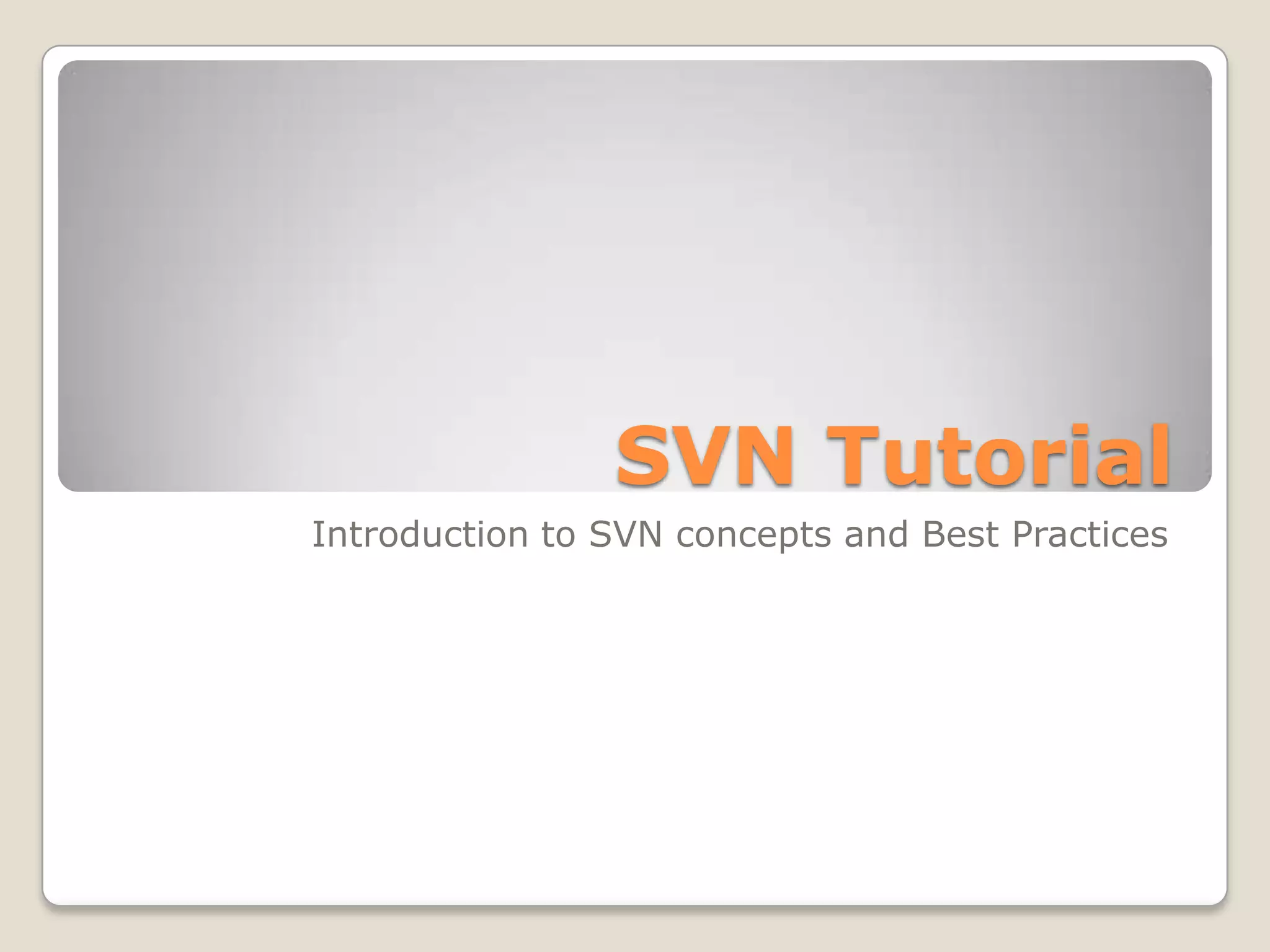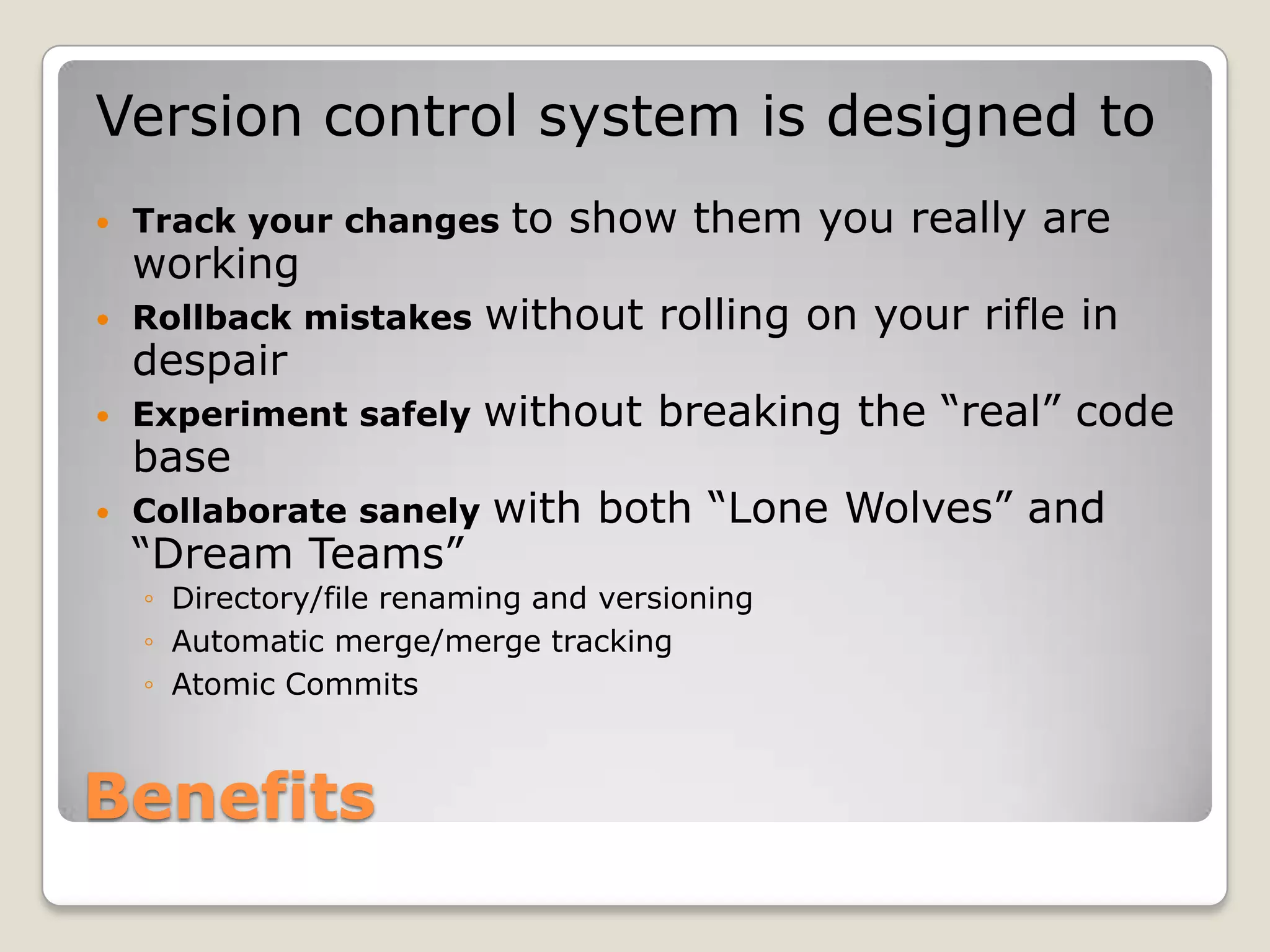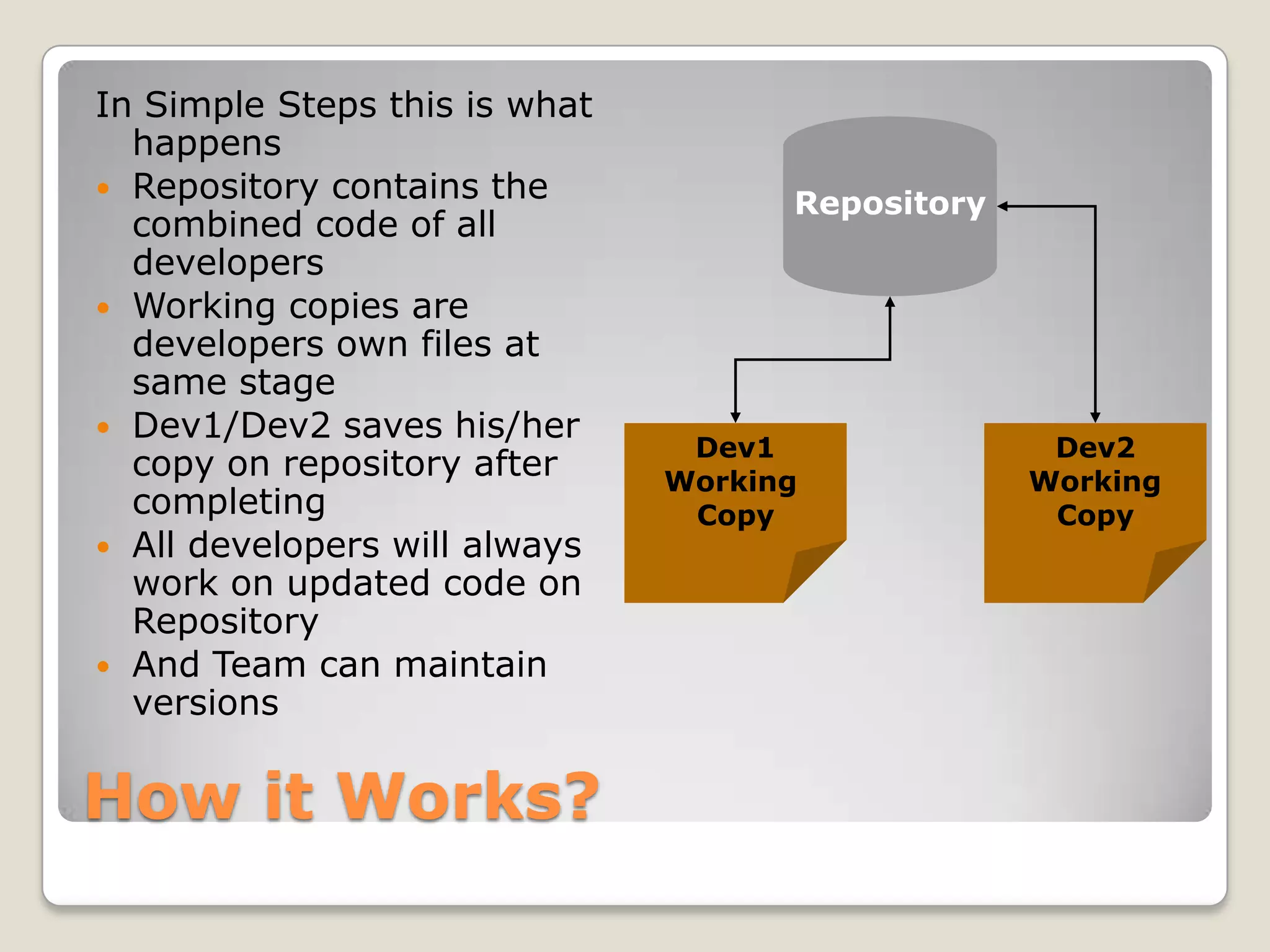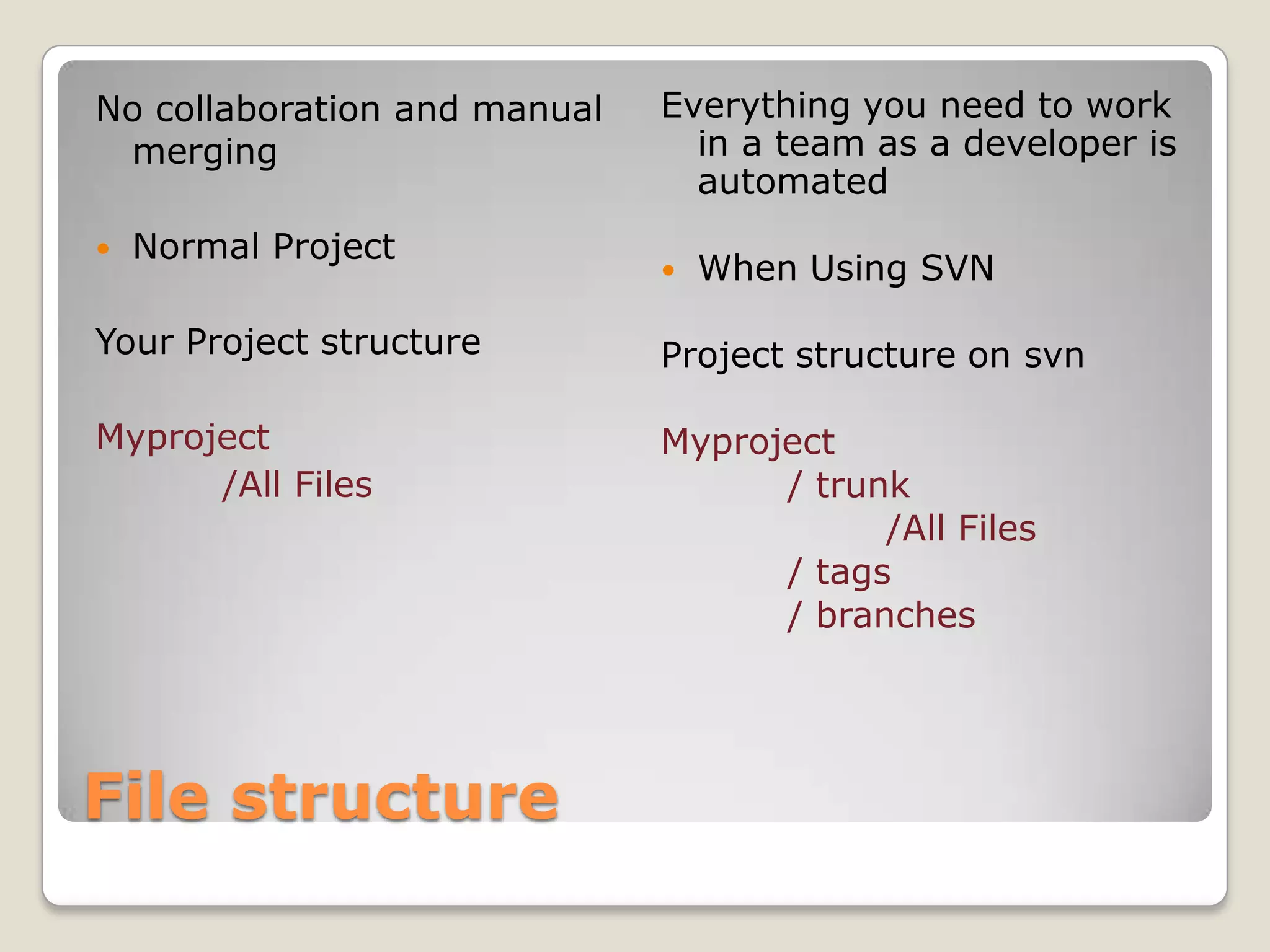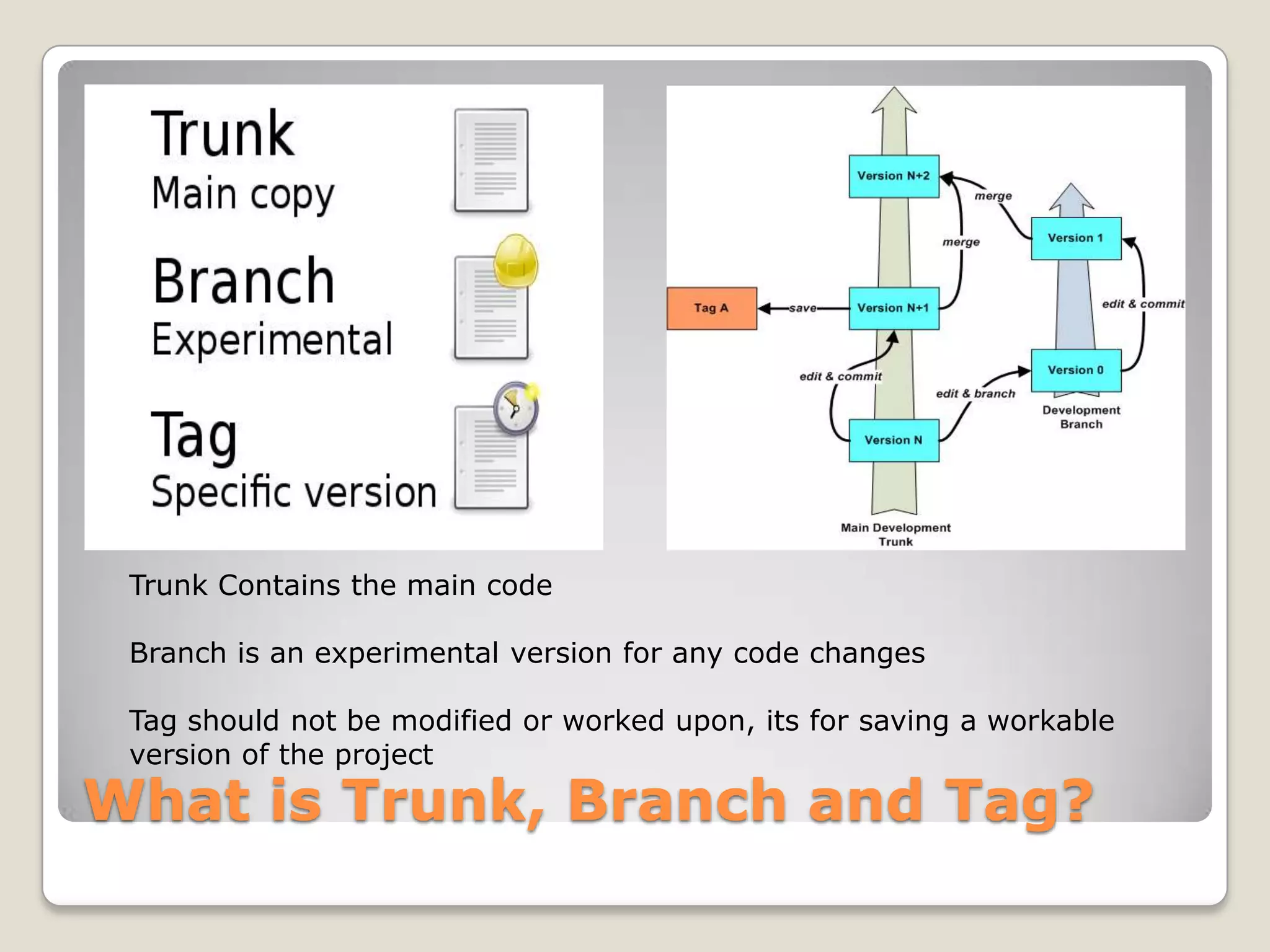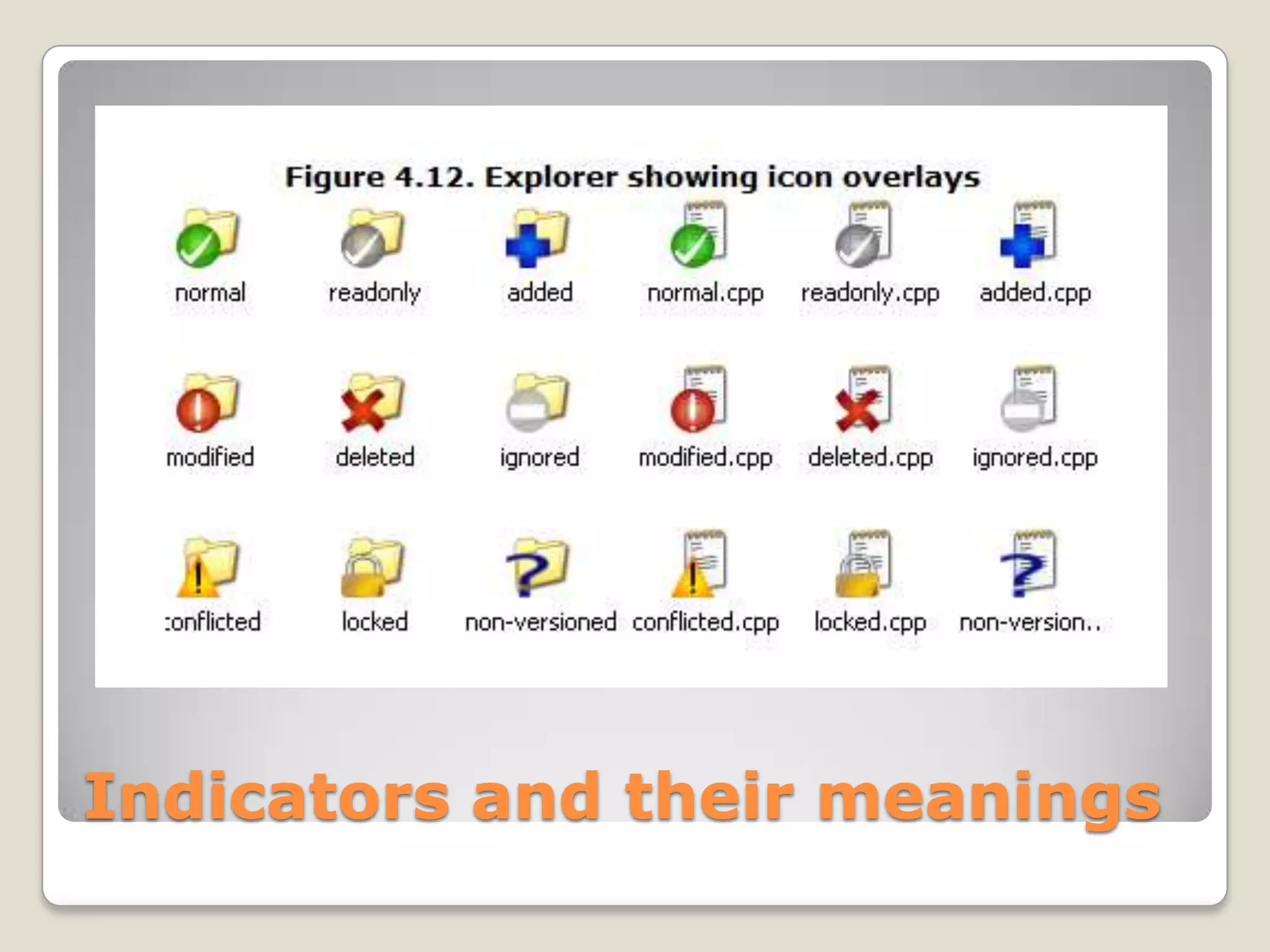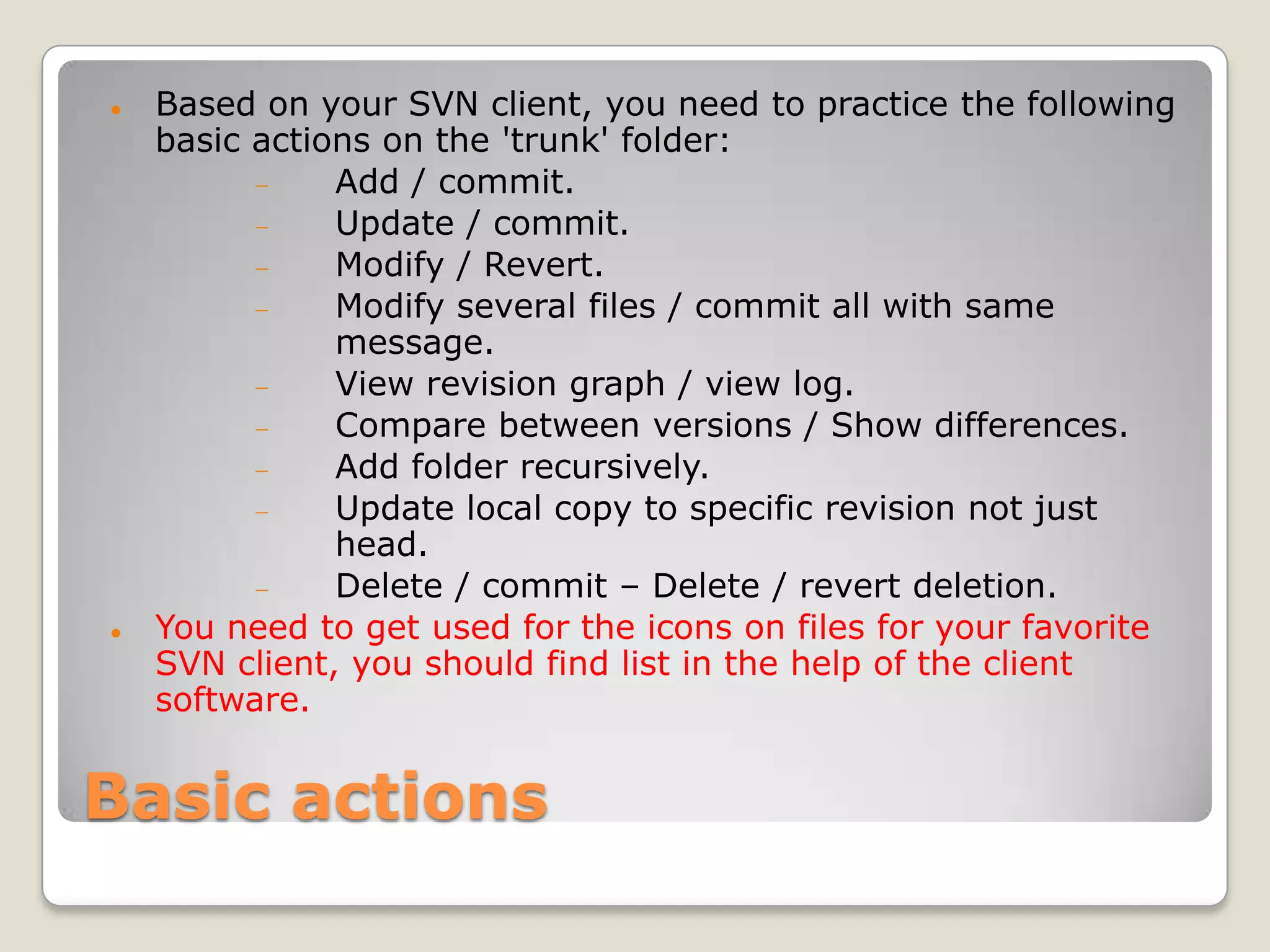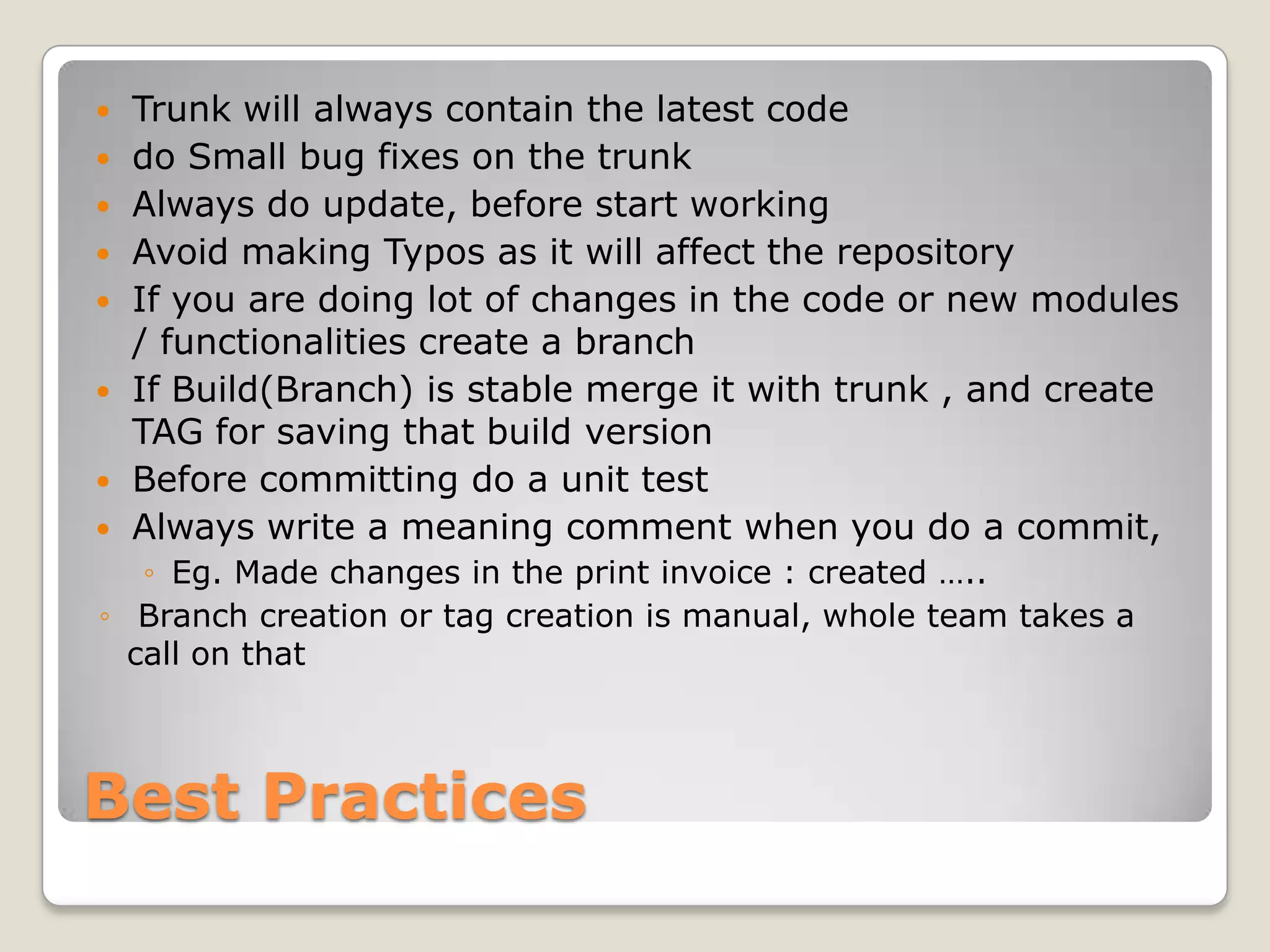This document provides an introduction to Subversion (SVN), a version control system. It describes key SVN concepts like the repository, trunk, branches, and tags. The trunk contains the main codebase, branches are for experimental work, and tags save stable versions. SVN allows developers to track changes, rollback mistakes, experiment safely without breaking the main code, and collaborate effectively. It works by having a central repository that all developers update and commit their code to. This ensures everyone works from the latest version and changes can be merged automatically. The document outlines best practices like using branches for new features, tagging stable builds, committing with detailed messages, and updating frequently.
